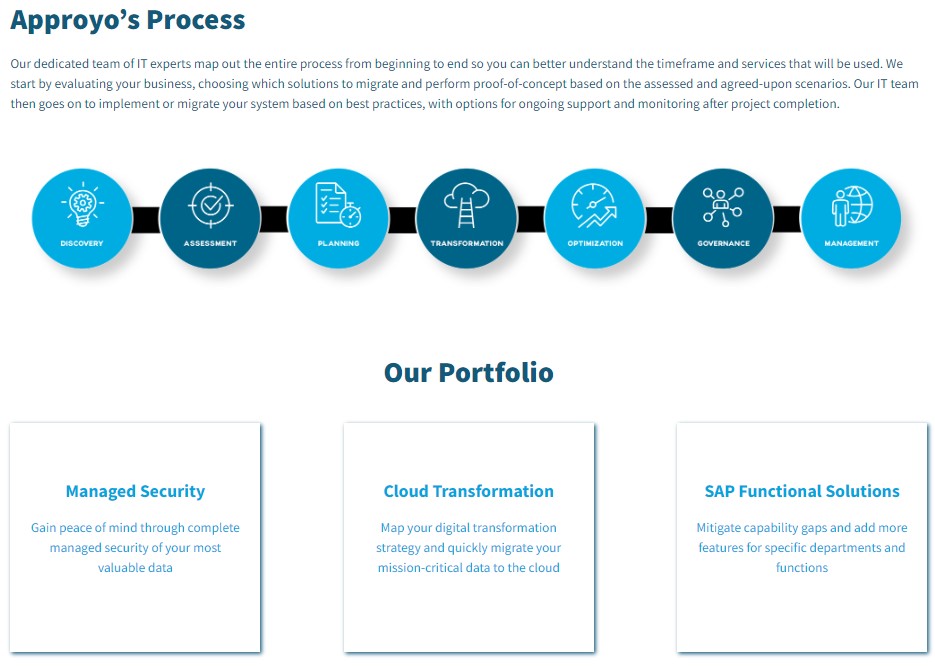Blog
Sap S/4Hana Migration: Most Common Questions for Businesses
May 5, 2023
May 5, 2023
SAP, one of the largest enterprise resource planning (ERP) software solutions in the world, is evolving. SAP S/4HANA is the latest version of this popular business suite. And in light of its unique architecture that facilitates faster, real-time analytics and computational capabilities, SAP S/4HANA migration is a hot topic for many enterprises!
For over 40 years, SAP has been a trusted partner for businesses of all sizes, helping them execute mission-critical tasks—to the point that the software has become an integral part of business operations. However, come 2027, SAP will end support for its current business suite applications. Although this is in large part being done to encourage SAP S/4HANA migration, the advantages of the new generation’s performance enhancements are undeniable.
If your business is still on the fence about data migration to S/4HANA, then you’re missing out on its increased efficiencies, flexibility, and ease of use. And the longer you wait for the transition, the farther you’ll fall behind the competition.

Photographer: Wright Studio
Data migration to S/4HANA is more than just a technical upgrade—it’s a tool to transform your business. Full migration brings with it a multitude of benefits and an enviable return on investment.
Here are 3 compelling reasons to consider the upgrade.
SAP S/4HANA is designed to improve performance in multiple ways. Its most important feature is in-memory technology. Here, embedded analytics enable faster processing of data as well as generating insights in real time. Moreover, centralized data helps with coordination across different departments.
Many companies have large and complex data landscapes that are increasingly difficult to manage or have become redundant over time—all of which can be costly to clean up.
Harmonizing data is a core feature of digital transformation. S/4HANA can migrate historical data, remove duplications, and consolidate trusted data into a single structure. This makes your data systems more streamlined and efficient.
Another major benefit of S/4 HANA is that it allows the automation of repetitive tasks, using more than 150 robotic process automation (RPA) bots. Moreover, its artificial intelligence (AI) and machine learning (ML) technology automates data collection and generates intelligent insights.
SAP S/4HANA migration can help you cut costs in several ways. Thanks to its in-memory technology and simplified data model, you won’t have to invest in additional IT infrastructure. Further, as it reduces data redundancy, even the maintenance expenses go down. You’ll also notice significant cost savings in day-to-day operations.
S/4HANA's real-time processing and analytics capabilities help companies make better-informed decisions and take corrective actions faster. HANA provides a single, integrated view of business processes to reduce errors and improve efficiency.
The timeline for implementing SAP S/4HANA migration differs from company to company. Critical criteria include the complexity of the project, the size of your organization, and the level of customization required. Full implementation may take anywhere from six months to over a year, including the time required for testing, migration, and troubleshooting.
Because these steps can be complex and time-consuming, enterprises frequently opt for a phased implementation of SAP S/4HANA migration. This means starting with a specific business unit before rolling it out fully. The benefits of this approach lie in minimizing disruption as well as allowing you to become more accustomed to the system before tackling full implementation.
Do remember, however, that the implementation process doesn’t end with the initial deployment. Going forward, you’ll need to consider ongoing maintenance, upgrades, and improvements to keep the system running smoothly.
To minimize the risk of delays or complications, it makes sense to work with an experienced SAP partner or consultant who can guide you through the implementation process.
SAP provides several tools to make data migration easier. Here are some that you’ll need for installing SAP S/4HANA and migrating data.
The SAP S/4HANA Migration Cockpit automates data migration and data cleansing. It’s a user-friendly and intuitive process. The cockpit provides a step-by-step approach to migration, which includes pre-checks, system preparation, testing, and post-migration activities. You can also use this tool to track and troubleshoot any errors that may occur during the migration process.
Moreover, the migration cockpit lets you perform a "simulation" or a dry run. This helps to test the process, validate the steps, and identify any issues that could potentially result in data loss or corruption.
MOM defines and maps data migration objects, made up of individual data elements, between the source and target systems. Further, it provides a data modeling feature that allows users to create and edit data models. This is useful for preventing data corruption.
SAP Landscape Transformation (SLT) is a tool used for real-time data replication and data integration between different systems. This means that any changes made to the data in the source system are immediately replicated in the target system. The result is near real-time data availability—a hugely useful feature for reporting and analytics.
The SWMP is what you use to create a backup of the system prior to migration. In addition, to help with installing new software and migrating the data, it performs post-migration tasks, such as updating the system configuration and applying post-migration patches.
In addition to these migration tools, you’ll need to develop a comprehensive project plan that outlines the scope, timelines, and milestones of the implementation, and dedicate a project team for the task—not to forget training end-users and IT staff to ensure proper system usage and maintenance.
Any customized changes you’ve made to your existing SAP system won’t necessarily be compatible with the new system. And if re-coding or replacement is required, it will increase the time and resources required for the migration. To avoid this, first, do a code review and impact analysis to determine whether these custom developments can be replaced by standard SAP functionalities.
As an added precaution, you should retest third-party add-ons once the migration is complete. This will determine whether the custom developments are working as expected.

Migration to SAP S/4HANA fits perfectly with your company's digital transformation goals—making your business more agile, capable, and productive. Moreover, with support for the current SAP suite set to end by 2027, it's important to make the migration now.
Partnering with an experienced SAP cloud provider like Approyo can make your migration process close to seamless. Approyo has managed over a thousand SAP environments worldwide. To start with, they’ll conduct a thorough discovery and assessment to ascertain your cloud readiness. After this, their dedicated IT team will map out the entire process for migrating your system, based on best practices. Approyo also provides options for ongoing support and monitoring after project completion.
With Approyo, you can trust that your workload migration will be stress-free and efficient. Contact them today for a consultation.